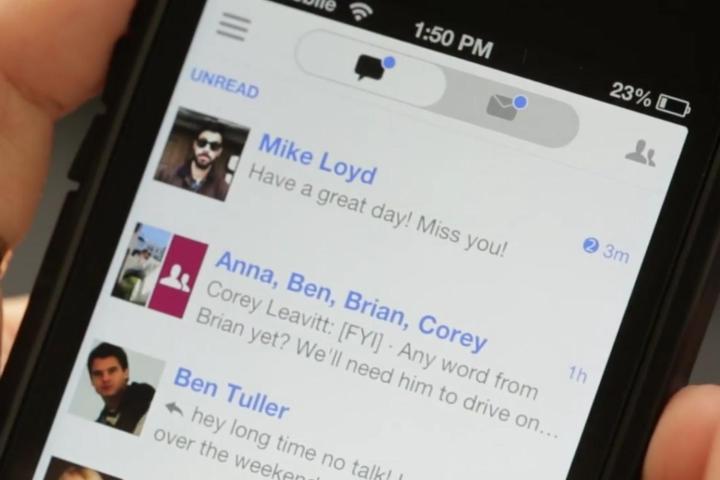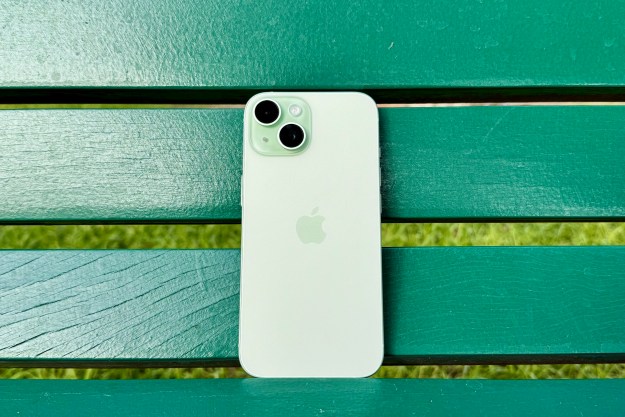
How many times have we heard about someone attempting to reinvent email? It’s a lot, and the thing is, I’ve never thought email really needed reinventing. It works in exactly the way it should – messages get sent and received, some of them with files attached – and that’s about it. What it really needs is someone to come in, brush it down, teach it some new tricks, and send it on its way. When I was offered the chance to speak to Erez Pilosof, co-founder of Ping, the latest company trying to make email more manageable, I was skeptical that his ideas would be any different to the rest.
Ping (not to be confused with the maker of fine golf clubs, or Apple’s failed music-focused social network) is concentrating on mobile email at the moment, which gives it an advantage. Interacting with people on your phone is far more conversational, whether it’s through an SMS, or over Twitter, Facebook, or Google+. With its iPhone app, Ping aims to bring the same degree of simplicity to email.
Pilosof himself has a strong background in email. He started Walla in 1995, a firm he described as the “Israeli Yahoo,” which quickly became the largest email provider in the country. Then at the beginning of this year, he decided his mobile email experience needed a good kick to bring it up to date. But instead of just changing the design, messing around with multiple inboxes, or adding complex algorithms for sorting mail – a crime committed by many who claim to reinvent email – Pilosof saw how the way we communicate with each other on a phone had changed, and based his new email system around this theory.

Ping brings social networking to your email
Ping is surprisingly simple. Forget about inboxes and folders, in Ping you’re presented with two panes: one filled with meaningful conversations between people, and the other with auto-generated messages, promo emails, newsletters, and other alerts. Pilosof said he was thinking about the way we interact over social networks when he came up with Ping.
“If I send you an email, it’s like I’m following you, you’re interesting to me,” he said. “But if I don’t engage with you, the message is there and I can view it, but it’s not in my conversation view.”
Emails are then grouped together by person, regardless of when the message was sent, or whether it was part of a continued conversation. Cleverly, turn the phone on its side, and the view changes to all the attachments and files sent between those in the discussion. Emails in Ping look like a conversation string more commonly seen in a standard message app, rather than an email client. This simplified, more fluid approach removes all the clutter, and helps focus on what’s not only important, but personally interesting.
By grouping emails this way, and using the “follow” logic, Ping reduces noise in the primary view without resorting to folders, flags, or groups. Even notifications from services like Twitter are filed away under one heading in the messages view. Going back to the conversational aspect of Ping, if you and the person with which you’re emailing are both using the app, then it turns into an iMessage style realtime chat, where you can see when a reply is being typed. Plus, if you’re both online, you can even voice or video call each other through Ping, just like Skype or BBM Voice.
The similarity with SMS messages extends to notifications. You can assign individual sounds to certain people, or turn them off entirely for those emails which fall under the secondary messages category.
At the moment, Ping only supports Gmail, Yahoo, AOL, and iCloud, so if you have your own email address through a domain, then you can’t yet add it to Ping. Pilosof didn’t commit to when such a feature would become available, but did say it may appear in the future.
Ping wants to innovate, not reinvent email
So what’s Ping like to use in real life? If you’re frustrated by Google’s ridiculous new inbox with multiple folders containing social networking notifications and promotions, you’ll love Ping’s simplicity. It does a brilliant job of splitting messages up into the two categories with no help from me, and I’ve not had to correct it at all. Plus, the threaded conversations work really well. I’m not what you’d call a Gmail power user. I converse with handful of people regularly, and having all correspondence under one heading is extremely helpful. However, I do get a lot of press releases and promo material to the account, which is almost always rubbish, and Ping’s way of separating it is not only better than Google’s, but requires absolutely no effort on my part.
If you’re frustrated by Google’s ridiculous new inbox with multiple folders, you’ll love Ping’s simplicity.
Has Ping reinvented my email over the past couple of weeks testing it? No, but it has made using Gmail more pleasurable, and has cut down immensely on all the noise and confusion of a busy inbox. The social-style method of organizing email is innovative and makes perfect sense on the phone. If I solely used Gmail for all email communication, Ping would replace Apple’s own Mail app on my iPhone. It was a breeze to set up, and everything from writing a quick reply to sending a picture is very simple.
Ping is available on the Apple App Store as of today, and you can register for it on Ping’s website right now. Pilosof said the first million will get the app for free. After that, the team will decide how to monetize the project. I was concerned this would mean a bunch of ads would eventually turn up to ruin the app, but he was confident it would be easy to monetize without resorting to ads, even if they have to go down the WhatsApp road of introducing a nominal subscription fee. (WhatsApp charges users $1 a year.) He did warn us the app would have a staggered rollout to ensure its servers aren’t overloaded.
If you’re a Gmail fiend and sick of either the standard iOS app or the desktop client and its annoying new ways, Ping could be for you. If, like me, your email doesn’t need reinventing, just a healthy injection of innovation, then Ping fits the bill very well.
Editors' Recommendations
- How to find your phone number on iPhone or Android
- iPhone SE deals: Refurbished 2nd and 3rd Gen iPhones
- Best refurbished iPhone deals: Get an iPhone 14 for $513
- An Apple insider just revealed how iOS 18’s AI features will work
- Best iPhone deals: Save on iPhone 15, iPhone 15 Pro Max and more





